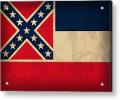

Originally Posted by
mhb

FWIW, you did not say that your rifle is actually an SA with the serial number you give: if it's actually a Rock Island of that number, the point is moot, since RI changed to DHT with #285,507 (there is no real doubt about it, as that was the first number they recorded when production commenced with the new heattreatment. And RI was also instrumental in the introduction of Nickel Steel, commencing with #319921, and neither of the post-interruption RI rifles are suspect of being unsafe: quite the contrary, they are some of the best actions and to be preferred over any low-number by either manufacturer.
PRD1 - mhb - Mike
I think you misread my serial number, it is 36,018 and is made by SA. I have read Hatcher cover to cover and I never have figured out why they spent so much time trying to reinvent receiver forging and heat treatment when all they had to do was copy what Winchester, Remington, and the Remington plant at Eddystone had been doing for years.
The theory is not of my own, it is very informed. Note that SA didn't even record when the new DHT receivers were made and when a batch of old ones were found they went right into production! If they are so dangerous why did they do that?
Phillip McGregor (OFC)
"I am neither a fire arms nor a ballistics expert, but I was a combat infantry officer in the Great War, and I absolutely know that the bullet from an infantry rifle has to be able to shoot through things." General Douglas MacArthur








